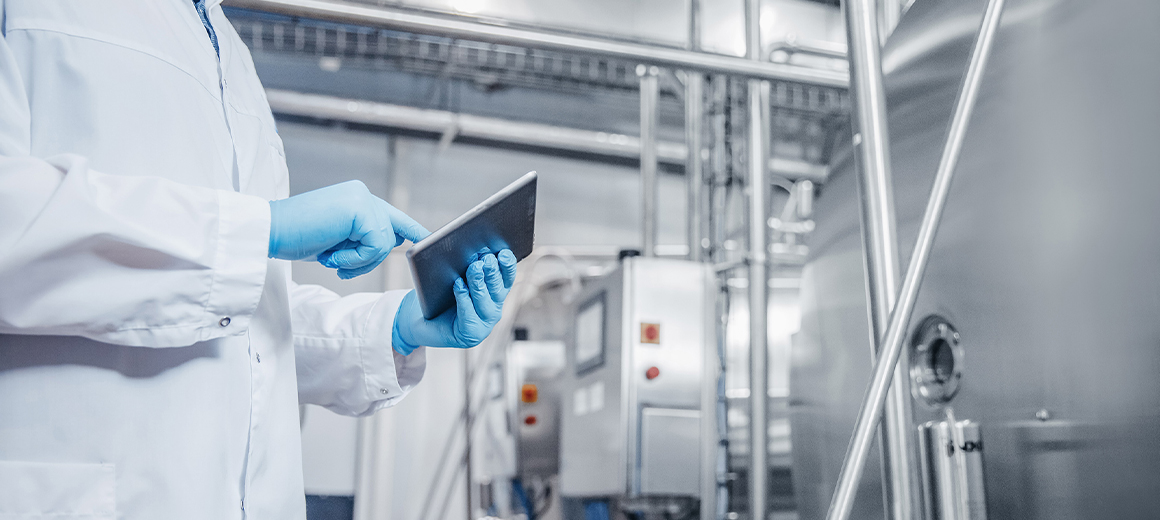

Stephen Hayes, managing director of Beckhoff UK, explains how food engineers can get started with digitalisation
Digitalization is a term that bears a different meaning depending on the role and responsibility of who is asked. For managers, the focus is often around the collection and analysis of plant data. Engineers, on the other hand, often consider it more as connecting more sophisticated automation technologies together for greater process and motion control. Both approaches rely on the right technology being deployed on the production line. Here, Stephen Hayes, managing director of Beckhoff UK, explains how food engineers can get started with digitalization.
The food and beverage industry is one that lends itself nicely to the promised benefits of digitalization. Whether a food manufacturer wants to reduce food waste in the production process, improve quality control, or simply increase efficiency, digital technologies promise a solution. Irrespective of the goal, each outcome stems from the right mix of digital technologies on the production line. More specifically, it all starts with a focus on the communications technology that will underpin digitalization efforts.
Many digitalization efforts begin with a fragmented approach, with various areas of a business looking to make their own areas of operation digital. For food manufacturers, it might be that the raw ingredient handling segment has invested in automated equipment and machine vision to control quality more effectively. Alternatively, it may be that a high-speed portioning machine has been introduced that can use camera input and recipe data in a separate platform to process foods of different sizes.
Each of these applications may seem distant from one another, but they both rely on fast communication of data between systems, whether that is for process and motion control, or for data to be stored and shared between digital platforms.
Data is the essence of digitalization, so the first step for engineers embarking on a journey to digital transformation is to plan the optimum way of communicating this data between machines and systems. This means focusing on the communication technologies, namely the fieldbuses, in place first, rather than immediately considering new machinery or equipment investments.
Fieldbuses and industrial Ethernet-based systems are often overlooked in the digitalization process because engineers are already familiar with one or several of them. Although these technologies have been around for many years, there are several that are continually developed and built on open standards to keep up to date with the evolving needs of digital technology. Among these, EtherCAT remains one of the best choices due to its high data rates, low cost, and deterministic, synchronous nature.
The use of a fieldbus like EtherCAT is invaluable because it not only facilitates high-speed transmission of data for control or collection purposes, but it also does so in a highly efficient way. Each telegram of data is transmitted from the master device, which can be either a fieldbus terminal or a single industrial computer terminal with a PC-based control suite, and passes through each node on a network. Each node takes only the relevant packets of data necessary as the telegram continues to move downstream, eliminating network delays and simplifying synchronous multi-axis control.
With efficient communication of data on networks, it allows engineers to ensure that any new automation or digital systems can perform to a higher standard immediately after setup. This is why, in our opinion, it is the most important first step for any engineer starting to digitalize the factory floor.
Once the communication layer is established, the ideal next steps are to ensure that prospective technology is able to be adequately used by engineers, and that it meets the long-term business goals.
Many new digital technologies bring with them a need for specialist skill sets that some engineers may not necessarily have, such as programming in new languages. One option is to hire specialist help for configuring or programming these systems as needed, but a more cost-effective and long-term option is to find means of integrating this technology into familiar environments. Bringing machine vision programming into a PLC environment, such as with Beckhoff’s TwinCAT Vision, makes it easier for engineers to adjust as needed.
As a term that encompasses so many technologies and areas, digitalization can be a difficult concept to navigate for food engineers who are just starting out. With this in mind, starting at the data communication level and building digitalization plans from the ground upward is vital to achieving a successful adoption of new technologies that provide long-term value.